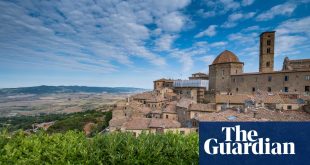Glasgow’s past, present and future
This walk between Kelvinbridge and St Enoch subway stations follows Glasgow’s River Kelvin before it joins the more famous River Clyde, which leads you to the centre of the city. It’s full of contrast, leading through quiet riverside parks and by the side of busy dual carriageways, and passing some of Glasgow’s most interesting museums and galleries, including Kelvingrove, Kelvin Hall and the Riverside Museum. You’ll see reminders of the river’s past alongside the modern exhibition centre, arena and hotels promising a very different future.
Graham Dean
A big loop of London

My mother adores the countryside; I delight in anything urban. In a bid to do something together we started the Capital Ring Walk earlier this year, a 78-mile walking loop around London. We have broken down the walk into chunks and meet once a month at a designated train or tube station. Whether it’s the density of the trees and muddy trails at Biggin Wood in Norbury or marvelling at the Thames Barrier in Woolwich, we’ve found commonality with each other and our ramblings. On every walk we’ll find a new pub for an unexpectedly delicious lunch or we spot other people on the same loop searching for the familiar signposts. We absolutely love it.
Iona
Profile
Readers’ tips: send a tip for a chance to win a £200 voucher for a Sawday’s stay
Show
Guardian Travel readers’ tips
Every week we ask our readers for recommendations from their travels. A selection of tips will be featured online and may appear in print. To enter the latest competition visit the readers’ tips homepage
–
Along the Ouse and the through the marshes in York

The Bishopthorpe Loop is a five-mile stomp capturing some of the lesser-known sites of York, bits of countryside and the option for lunch around halfway. Head out down the River Ouse past Millennium Bridge and the chocolate factory, watching river users sweep by. The walk sits on a raised section of bank so is passable in all but the worst floods. You come in at the top end of Bishopsthorpe, join the pavement and walk through, stopping at a choice of pubs for lunch or a drink. Then pick up the Solar System trail back into York, finishing by stomping across the Knavesmire marshes.
Catriona
Walking through history beneath Birmingham’s Spaghetti Junction
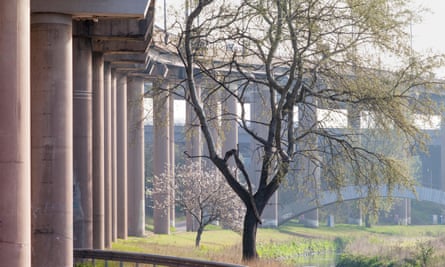
Birmingham has many great walks but beneath Spaghetti Junction is a hidden urban delight – a time machine for past and present transport. There’s a cycle route, footpaths and a railway line, and the Birmingham and Fazeley canal crosses the River Tame while the motorway rumbles overhead. Along the walk you’ll spot wildlife, street art and the remains of lost industry. For a short walk, start from Salford park and walk under the massive concrete supports of the A38(M) and join a towpath. If you are feeling energetic, walk down to Spaghetti Junction along the canal from Gas Street Basin in the city centre – or even Digbeth for the really keen.
Jo Brookes
Spotting sea life off Brighton
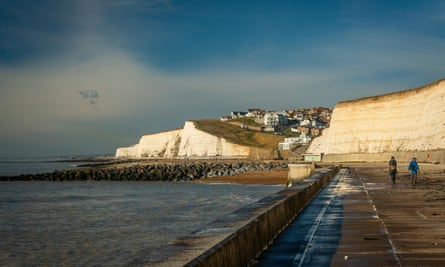
A completely flat route suitable for all ages and mobilities, the under-cliff walk from Brighton to Saltdean takes in a quieter side of the East Sussex coast. You’ll see birdlife and maybe even a seal or dolphins. Starting from Brighton Palace pier, it’s four-and-a-half miles one way, but can be made shorter if you start at Brighton Marina, which has free parking for up to four hours. If you don’t fancy walking back, the number 12 bus runs back along the coast road.
Charlotte Murphy
Canterbury’s sculptures trail and murals

Revisiting Canterbury, we followed the sculpture trail to explore wider parts of the city unfamiliar to us. The sculptures on our quest included a fountain, a statue of the sixth-century King Ethelbert of Kent, and a giant face, but they weren’t the only points of interest along the route. Vibrant murals displaying the city’s history and nature brighten up concrete underpasses – my favourite are of wildflowers by the river. Other highlights were a physic garden, with boards explaining medicinal herb uses, and a plane tree with an enormous trunk said to have engulfed a circular bench.
Sharon Pinner
Mill ponds, an aqueduct and den-building in Leeds
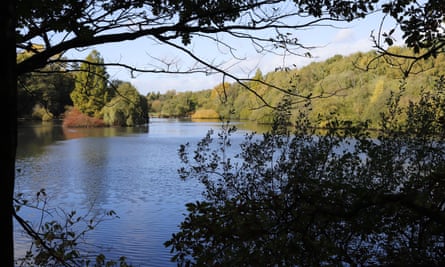
The Meanwood Valley Trail to Golden Acre park consists of five miles of easy walking, only a short bus ride from Leeds city centre, and is full of surprises at any time of year. Leave the streets behind and head into the glorious deciduous woodland valley with just the birds and the babbling stream for company. Along the route are signs of the area’s industrial heritage: stone quarries, millponds and notably the Seven Arches aqueduct, which was erected in the 19th century to carry fresh water to Leeds when it was a growing hive of industry. There are plenty of opportunities for den-building on the way, and bird hides for wildlife spotting. Golden Acre park also has an inviting cafe with views over the lake.
Chris Middleton
Explore Plymouth’s maritime heritage
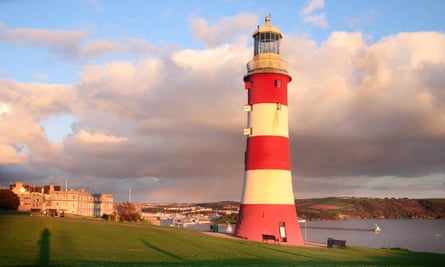
I love hiking through Britain’s Ocean City – . You can spend anything from an hour to a whole day walking in Plymouth and come away with many and varied insights into its maritime heritage. You’ll have seen everything from kayaks, fishing boats and naval vessels old and new on the water, to stunning views of the coastal parks and cliffs and historic monuments, statues, a lighthouse and the Royal Citadel. You’ll have salt in your hair, on your skin and even in your heart by the end. I recommend following the coast around the Hoe, then cutting inland and weaving your way back through the historic streets.
Susanna Callaghan
Tea, cake and sandy beaches near Newcastle
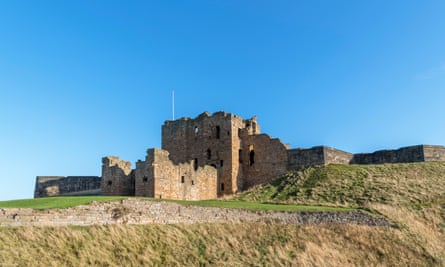
I like to take the metro to Tynemouth, start off with tea and cake in one of the many cafes and then stroll along the boulevard that stretches north. Stop at Tynemouth Priory and Castle (free for English Heritage members) and explore the 2,000 years of history. I particularly enjoy the views to South Tyneside over the River Tyne. There are sandy beaches here, really close to Newcastle, where you can swim or let your dog run. Walk via Cullercoats to Whitley Bay and enjoy the view of Saint Mary’s Island with its iconic lighthouse. Take the metro back to the toon.
Monique Gadella
WINNING TIP: Regenerated warehouses and cleaned-up canals in Manchester
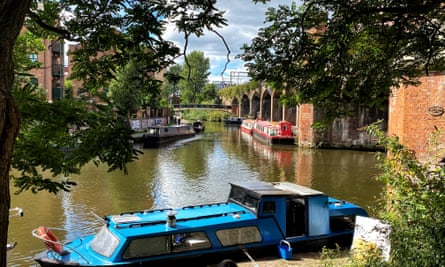
Mamucium, the Roman settlement, is now Castlefield (named after the fort they built) and is the oldest and my favourite part of the city. The Industrial Revolution gave Castlefield canals, the first passenger railway station, a glorious viaduct and enormous red-brick warehouses. Prior to the 1980s, when it became an urban heritage park, it was a part of Manchester you’d avoid. Now it’s been cleaned up and it’s lovely. Warehouses house businesses and apartments, the canals are used for pleasure, there are nice pubs (try the Wharf), the MOSI (the Science and Industry museum) and a National Trust “sky park” up on the viaduct.
Lynne
 Top Naija News: Nigerian News, Breaking News Nigeria and World News Top Naija News is a daily news publication in Nigeria, delivering the latest breaking news in Nigeria and around the world.
Top Naija News: Nigerian News, Breaking News Nigeria and World News Top Naija News is a daily news publication in Nigeria, delivering the latest breaking news in Nigeria and around the world.

